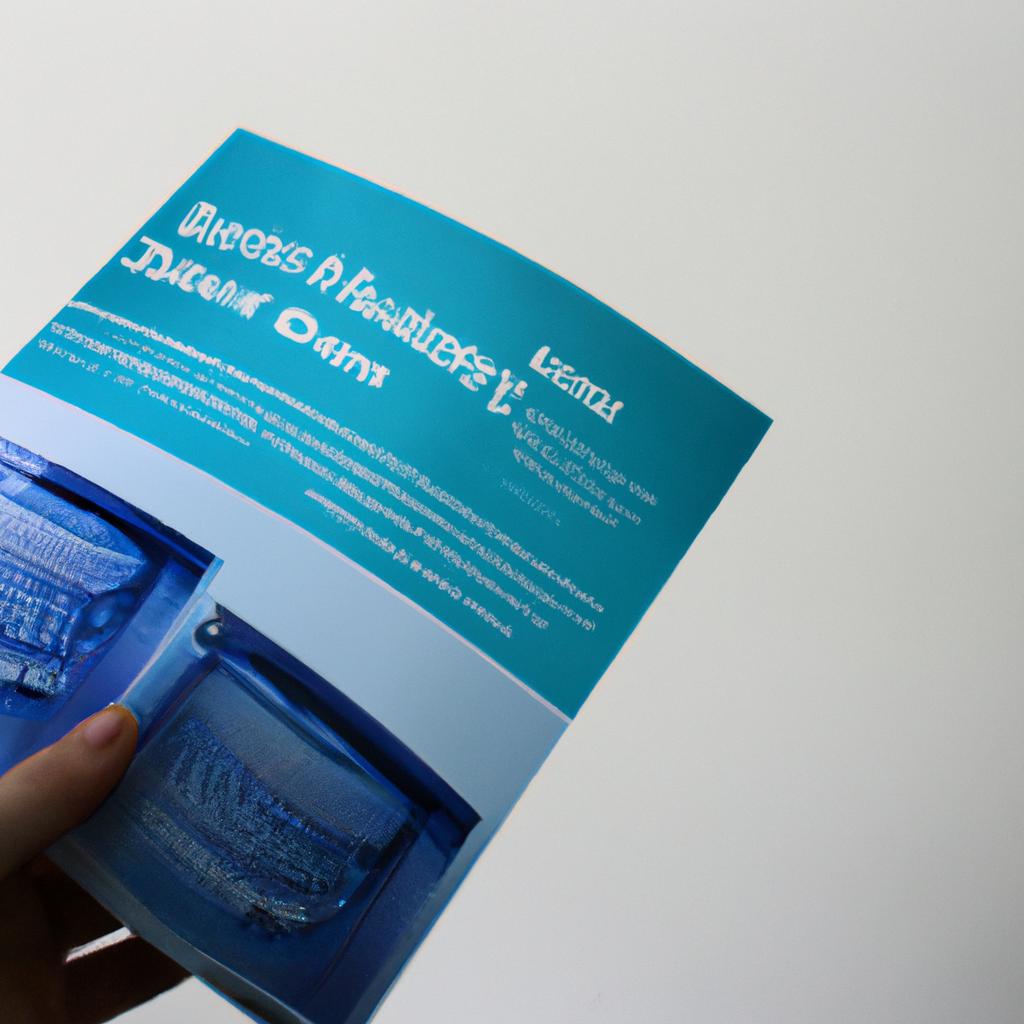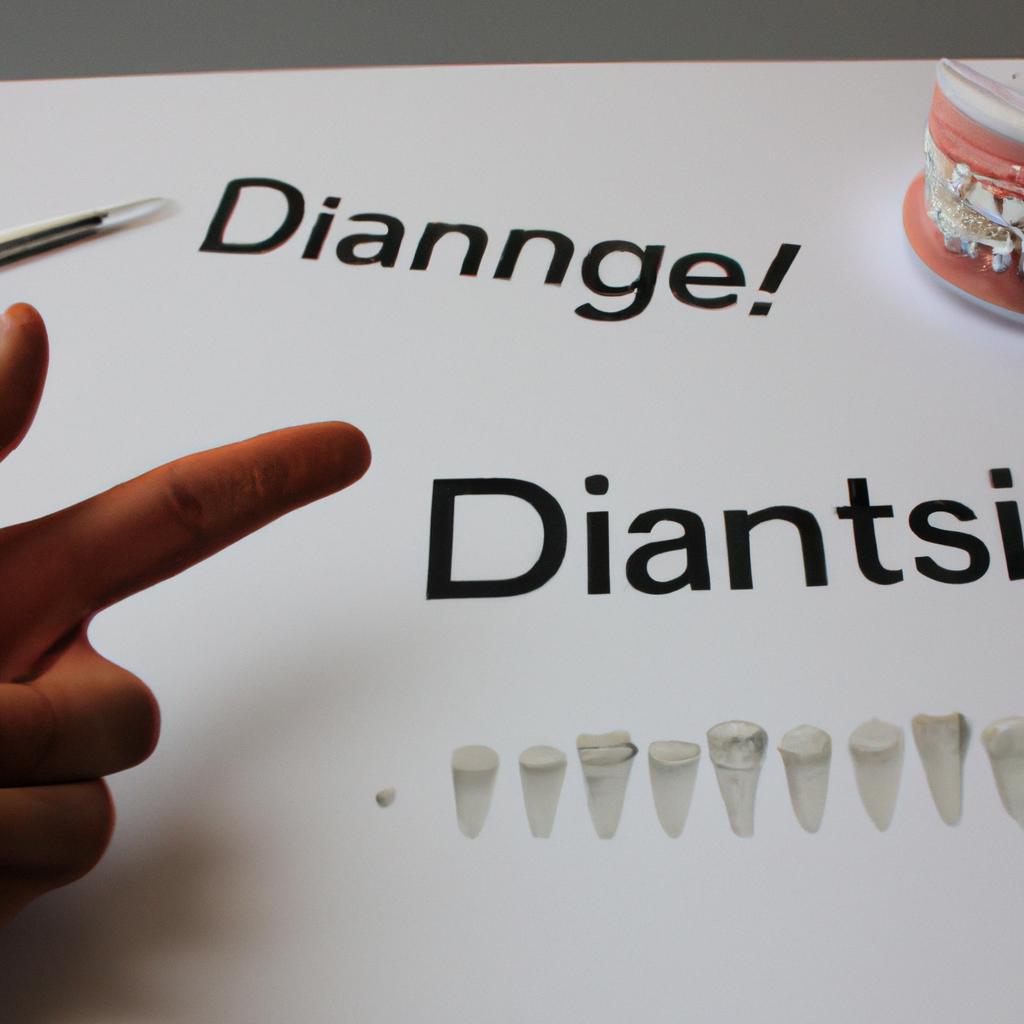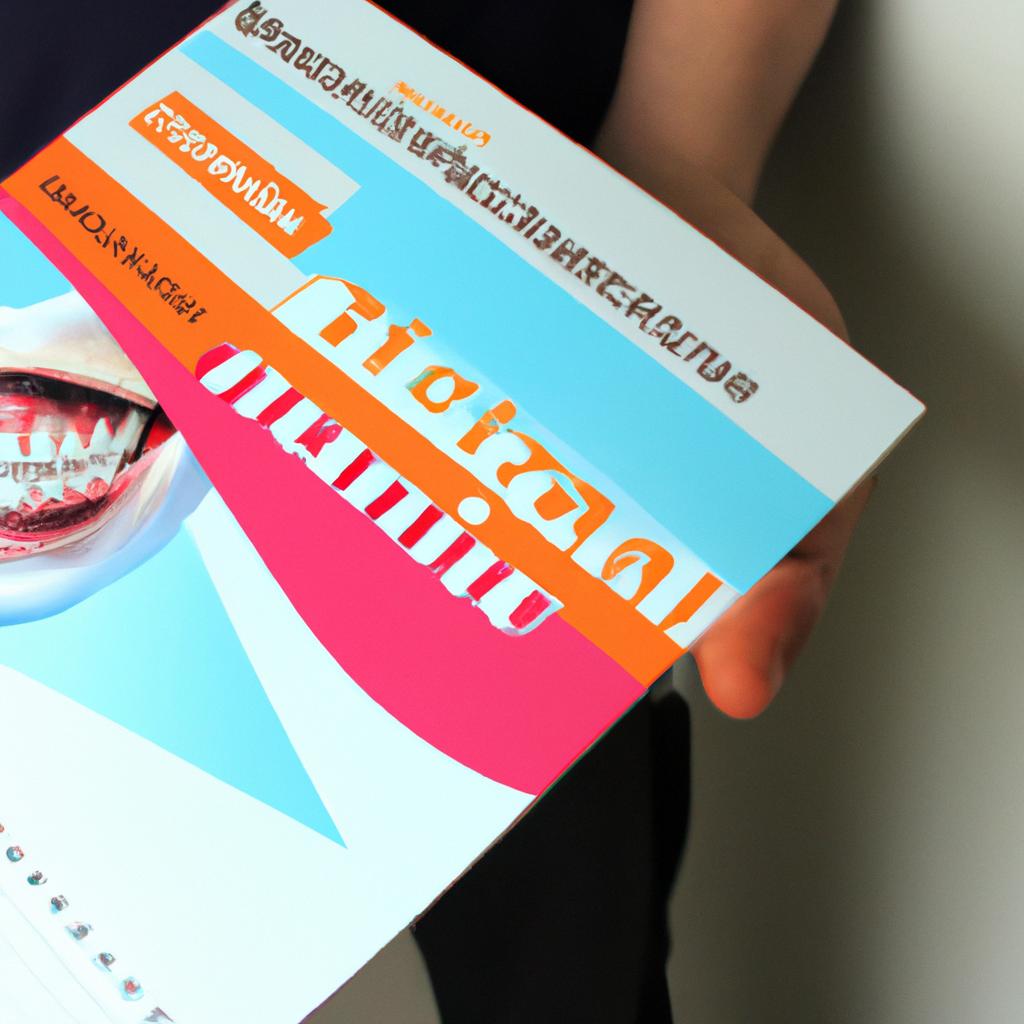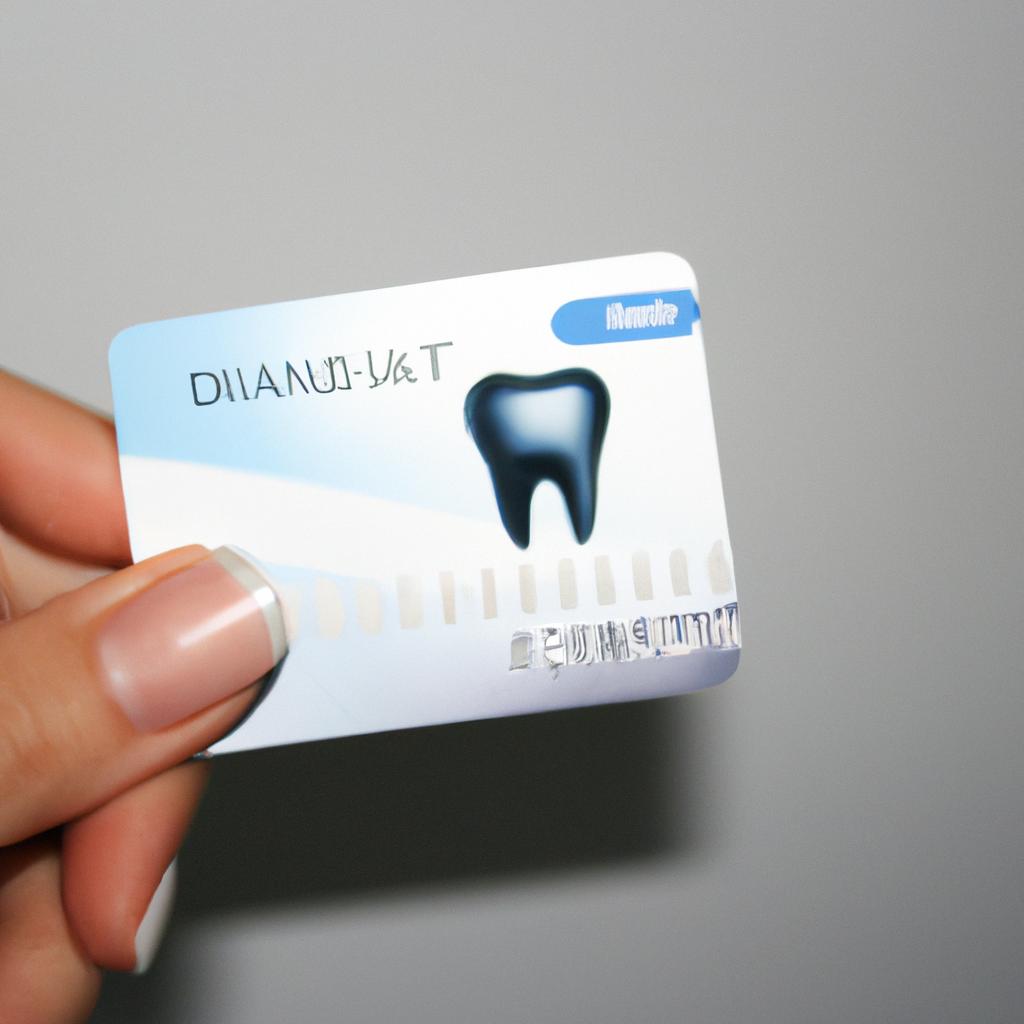Dental Savings Plans for Dental Specialty: A Guide to Dental Financing

Dental care, particularly in specialized fields such as orthodontics or oral surgery, can often present a significant financial burden for individuals and families. Without proper dental insurance coverage, the costs associated with these procedures can be overwhelming and deter many from seeking necessary treatments. However, there is an alternative solution that offers affordable access to quality dental care – dental savings plans specifically designed for dental specialty services.
Consider the hypothetical case of Sarah, a young adult who requires orthodontic treatment due to misaligned teeth. Like many others, Sarah does not have dental insurance coverage and is concerned about the high cost of braces. Dental savings plans catered towards orthodontic procedures provide her with an opportunity to receive the required treatment at a more manageable expense. This article will serve as a comprehensive guide on how dental savings plans work within the realm of specialty dentistry, exploring their benefits and considerations while addressing frequently asked questions regarding financing options for specialized dental treatments.
Understanding Dental Savings Plans
Imagine you are faced with a dental emergency, such as severe tooth pain that requires immediate attention. You rush to your local dentist, only to discover the high cost of the treatment needed. This situation is not uncommon, and it highlights the importance of understanding dental savings plans.
Dental savings plans, also known as dental discount plans or dental membership plans, provide an alternative method of financing for various dental procedures. These plans offer discounted rates on services provided by participating dentists in exchange for an annual or monthly fee. By enrolling in a dental savings plan, individuals can gain access to affordable oral healthcare without having to rely solely on insurance coverage or paying out-of-pocket expenses.
To better understand the impact and benefits of dental savings plans, consider the following:
-
Cost-effective: A key advantage of dental savings plans is their ability to significantly reduce dental care costs. With many traditional insurance plans requiring hefty premiums and imposing limitations on coverage, these savings plans present an appealing alternative. Individuals who opt for a dental savings plan can save anywhere from 10% to 60% on various treatments and procedures.
- Lower overall expenses
- Increased affordability
- Greater accessibility
- Enhanced flexibility
-
Wide network of providers: Dental savings plans often have extensive networks of participating dentists across different specialties. This means that individuals can choose from a range of experienced professionals within their area. Having numerous options ensures patients find a provider they feel comfortable with while still benefiting from reduced fees offered through the plan.
Specialists Participating Dentists Orthodontics 500+ Periodontics 800+ Endodontics 400+ Oral Surgery 600+ -
No waiting periods or pre-authorization: Unlike traditional dental insurance plans, dental savings plans do not typically have waiting periods or require pre-authorization for treatments. This means that individuals can receive the necessary care as soon as they need it without any unnecessary delays or paperwork.
In summary, understanding and considering dental savings plans is crucial when seeking affordable oral healthcare options. By enrolling in a plan, individuals can significantly reduce their expenses while gaining access to a wide network of providers without waiting periods or complicated authorization processes. In the following section, we will delve deeper into the various benefits that dental savings plans offer.
[Transition sentence]: Now let’s explore the benefits of dental savings plans and how they provide an effective solution for managing your dental finances.
The Benefits of Dental Savings Plans
Imagine this scenario: Sarah, a 30-year-old woman, had been putting off getting braces for years due to the high cost involved. However, she recently discovered dental savings plans and decided to explore her options. By enrolling in a dental savings plan specifically designed for orthodontic treatments, Sarah was able to significantly reduce the expenses associated with getting braces. This case study exemplifies how dental savings plans can provide individuals with access to affordable specialized dental care.
One of the main advantages of dental savings plans is their ability to maximize your savings while ensuring quality dental treatment. Here are some key ways in which these plans help you save:
- Negotiated Discounts: Dental savings plans negotiate discounted rates with participating dentists and specialists, which means that members receive substantial discounts on various procedures.
- No Annual Maximums or Waiting Periods: Unlike traditional insurance plans, dental savings plans often do not have annual maximum limits or waiting periods before you can use your benefits.
- Comprehensive Coverage: These plans typically cover an extensive range of dental services, including preventive care, restorative treatments, oral surgeries, and even cosmetic procedures.
- Flexibility and Freedom of Choice: With most dental savings plans, you have the freedom to choose any dentist within the network without being limited by provider networks or referrals.
Below is a table providing a visual representation of how much money individuals can potentially save through a dental savings plan compared to paying out-of-pocket:
| Procedure | Standard Cost | Dental Savings Plan Cost |
|---|---|---|
| Orthodontics | $5,000 | $3,500 |
| Root Canal | $1,200 | $800 |
| Teeth Cleaning | $100 | $60 |
| Porcelain Veneers | $1,500 per tooth | $1,000 per tooth |
As you can see from this table, dental savings plans offer substantial cost savings across a wide range of procedures. By taking advantage of these plans, individuals like Sarah can receive the specialized care they need without breaking the bank.
Understanding how to select an appropriate plan is crucial in order to make the most out of your dental financing options and ensure optimal oral health.
Choosing the Right Dental Savings Plan for Your Needs
Imagine a scenario where you need to undergo a complex dental procedure, such as orthodontic treatment or oral surgery. The cost of these specialized treatments can be overwhelming, often resulting in individuals putting off necessary dental care due to financial concerns. This is where dental savings plans come into play. These plans provide an alternative financing option that can help alleviate the burden of high dental costs while ensuring access to quality specialty care.
Dental savings plans offer several key advantages when it comes to financing your dental specialty needs. Firstly, they allow you to save money on both routine and specialized procedures by providing discounted rates negotiated with participating dentists and specialists. For example, let’s consider a hypothetical case study involving Mary, who requires extensive periodontal treatment for gum disease. With a dental savings plan, Mary could potentially receive up to 50% off the usual fees for her periodontal treatment.
In addition to cost savings, dental savings plans also offer flexibility and convenience. Unlike traditional insurance plans that often have waiting periods or restrictive networks, most dental savings plans are available immediately upon enrollment and do not require any pre-authorization or claims paperwork. Moreover, there are typically no annual maximums or deductibles associated with these plans, allowing individuals to access the care they need without worrying about hitting coverage limits.
- Peace of mind knowing that you have a dedicated financing option for your specialized dental needs.
- Accessible and affordable care without excessive paperwork or waiting periods.
- Ability to choose from a wide network of experienced dentists and specialists.
- Empowerment through taking control of your own healthcare decisions.
To illustrate how different types of dental specialties can benefit from these plans, below is a three-column table showcasing various procedures along with their potential discounts under a dental savings plan:
| Specialty Procedure | Usual Fee | Dental Savings Plan Discount |
|---|---|---|
| Orthodontic Treatment | $5,000 | 30% |
| Oral Surgery | $2,500 | 40% |
| Periodontal Treatment | $1,200 | 50% |
| Endodontic Procedure | $800 | 25% |
In conclusion of this section on dental savings plans, it is evident that these plans provide a practical solution for individuals seeking specialized dental care. By offering cost savings, flexibility, and convenience, they allow patients to access the treatments they need without breaking the bank or compromising their oral health. With an understanding of the benefits of dental savings plans established, let’s delve into how these plans specifically work for different dental specialty procedures in the upcoming section.
How Dental Savings Plans Work for Dental Specialty Procedures
Example Scenario:
Suppose you are in need of an orthodontic treatment that involves the placement of braces. The estimated cost for this procedure is $5,000. Without any form of insurance or financing assistance, this amount may seem daunting and unattainable. However, by carefully selecting a suitable dental savings plan, you can significantly reduce your financial burden.
Now let’s explore some key factors to consider when choosing the right dental savings plan for specialized dental procedures:
-
Coverage for Specific Procedures: Different dental savings plans offer varying levels of coverage for specific treatments or specialties. Ensure that the plan you choose provides adequate coverage for your particular dental specialty procedure.
-
Network Accessibility: Check whether the plan has a network of dentists who specialize in your required treatment. Having access to experienced professionals within your chosen field ensures quality care and optimal outcomes.
-
Maximum Annual Limitations: Evaluate the maximum annual limit specified by each plan. This refers to the total amount they will cover within a given year. Consider if it aligns with your expected expenses and frequency of visits related to your specialized procedure.
-
Flexibility in Payment Options: Look for a dental savings plan that offers flexible payment options such as monthly installments or deferred interest periods. This allows you to manage your finances effectively while undergoing complex and potentially costly treatments.
Please refer to the table below which summarizes some popular dental savings plans tailored towards various specialties:
| Dental Savings Plan | Specialty Coverage |
|---|---|
| Smilesaver | Orthodontics |
| PerfectTeeth | Oral Surgery |
| BrightSmile | Cosmetic Dentistry |
| HealthyBite | Endodontics |
By carefully assessing these factors and considering the specific needs of your dental specialty procedure, you can choose a dental savings plan that not only provides financial assistance but also caters to your unique requirements. In doing so, you will be well-prepared to embark on your journey towards optimal oral health.
Transition into subsequent section:
Now that we have explored how to choose the right dental savings plan for specialized procedures, let us move forward and discover how these plans can help save money while obtaining quality care.
Saving Money with Dental Savings Plans
How Dental Savings Plans Can Benefit You
Imagine this scenario: Sarah, a 35-year-old woman, needs to undergo a complex dental specialty procedure that will cost her significantly. However, she has limited financial resources and is unsure how to afford the necessary treatment. This is where dental savings plans come into play. These plans offer an alternative financing option for individuals seeking specialized dental care at more affordable prices.
Dental savings plans can provide substantial benefits for those in need of dental specialty procedures. Here are three key advantages:
-
Cost Savings: By enrolling in a dental savings plan specifically designed for dental specialties, patients like Sarah can enjoy reduced costs on their treatments. The plans negotiate discounted rates with participating dentists and specialists, allowing individuals to save anywhere from 10% to 60% off usual fees.
-
Flexibility: Unlike traditional insurance plans that often have limitations and waiting periods for certain procedures, most dental savings plans do not impose such restrictions or requirements. Patients can receive immediate access to the specialist they need without any delays or denials based on pre-existing conditions.
-
Comprehensive Coverage: Dental savings plans typically cover a wide range of specialized procedures, including orthodontics, oral surgery, periodontics, endodontics, and prosthodontics. Whether it’s braces or implants, these plans ensure that individuals have access to the necessary treatments without breaking the bank.
To illustrate the potential savings achievable through dental savings plans further, consider the following hypothetical comparison between regular out-of-pocket expenses and utilizing a dental savings plan:
| Procedure | Regular Cost ($) | Savings Plan Cost ($) |
|---|---|---|
| Orthodontic Braces | $5,000 | $3,500 |
| Wisdom Tooth Extraction | $800 | $480 |
| Dental Implants | $4,500 | $3,000 |
| Root Canal Therapy | $1,200 | $840 |
As you can see from the table above, Sarah could potentially save a significant amount of money by utilizing a dental savings plan for her specialized treatments. These savings not only provide financial relief but also ensure that she receives the necessary care without compromising on quality.
Understanding these misconceptions is crucial in making an informed decision regarding your dental financing options.
Common Misconceptions About Dental Savings Plans
Imagine a scenario where Sarah, a working professional in her mid-30s, is in need of extensive dental treatment. She requires multiple root canals and crowns to restore her oral health. However, like many individuals, she does not have dental insurance or the financial means to cover the full cost of these procedures. This is where dental savings plans come into play, offering an alternative solution for people like Sarah who are seeking affordable options for specialized dental care.
Dental savings plans provide numerous benefits that can help individuals save money while receiving necessary dental treatments. Here are some key advantages worth considering:
-
Cost-effective access to specialty care: One major benefit of dental savings plans is their ability to make specialized dental services more accessible financially. These plans often offer discounted rates on procedures performed by specialists such as orthodontists, periodontists, and endodontists. With a dental savings plan, individuals can receive highly specialized care at significantly reduced costs compared to traditional fee-for-service arrangements.
-
No waiting periods or annual maximums: Unlike traditional insurance plans that may impose waiting periods before certain services become eligible for coverage or cap the amount they will pay out annually, dental savings plans typically do not have such limitations. This allows individuals to promptly access the needed treatments without unnecessary delays and ensures that there is no predetermined limit on the amount they can potentially save throughout the year.
-
Flexibility in choosing providers: Dental savings plans generally allow participants to choose from a wide network of participating dentists and specialists across various locations. This flexibility empowers individuals to select providers based on factors such as proximity, reputation, or personal preferences – ensuring convenience and peace of mind when it comes to receiving quality care.
-
Additional discounts on non-specialty services: In addition to providing cost-savings on specialty treatments, many dental savings plans also extend discounted rates for routine preventive care like cleanings, X-rays, and fillings. This comprehensive coverage ensures that individuals can maintain their overall oral health without breaking the bank.
To further understand the benefits of dental savings plans, consider the following table showcasing a comparison between traditional insurance and dental savings plans:
| Features | Traditional Insurance | Dental Savings Plans |
|---|---|---|
| Waiting periods | Common | Rare |
| Annual maximums | Yes | No |
| Specialized care access | Limited | Extensive |
| Provider choice | Restricted | Flexible |
This table highlights how dental savings plans offer advantages in areas where traditional insurance may fall short. By eliminating waiting periods and annual maximums while providing broader access to specialized care and flexibility in choosing providers, these plans present an attractive alternative for individuals seeking affordable options for dental treatment.
In summary, dental savings plans provide cost-effective solutions for accessing specialty dental care without compromising on quality. With their ability to bypass waiting periods and annual maximum limits, as well as offering substantial discounts on both specialized treatments and routine services, these plans empower individuals to prioritize their oral health needs while staying within budgetary constraints.






